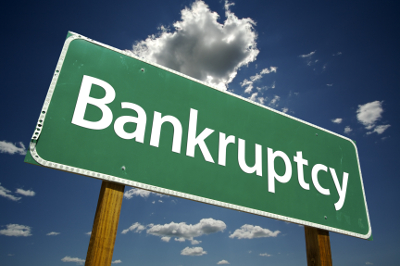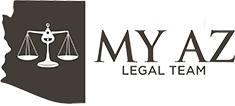Chapter 20 Bankruptcy in Arizona
Introduction to Chapter 20 Bankruptcy
For many individuals and businesses who file for bankruptcy, Chapter 7 bankruptcy will provide all the relief the individual needs to start fresh financially. In some instances, Chapter 7 bankruptcy is not enough to help the individual or business climb out of debt a�� so what are their options? You can only file bankruptcy once every couple of years, so the individual is unable to file another Chapter 7 bankruptcy right away. That is where Chapter 20 bankruptcy comes in to play. Chapter 20 bankruptcy allows an individual who just filed for Chapter 7 bankruptcy to file for bankruptcy again. So what is Chapter 20 bankruptcy and how exactly does it work?
Chapter 7 Bankruptcy or Chapter 13 Bankruptcy Basics
Generally, bankruptcy is a process that individual consumers and business can enter into in order to either erase or restructure a payment plan for some or all of their debts under the protection of the federal bankruptcy court.iA�There are two branches of bankruptcy that can be taken, depending on the individual or business who is filing.iiA�Those two branches include liquidation and reorganization.
Chapter 7 bankruptcy is the branch that is referred to as the liquidation bankruptcy.iiiA�It has been coined this name because a bankruptcy trustee is assigned to the case and is in charge of liquidating all assets of the debtor that are not exempt.ivA�The proceeds from that liquidation sale are then applied to the debts that have been listed for the bankruptcy. This is where the proofs of claim become important.
Chapter 13 bankruptcy is the branch that is referred to as the reorganization bankruptcy.vA�A Chapter 13 bankruptcy typically lasts between three to five years and often times it is a business who files for this type of bankruptcy. During that time span, the business will reorganize their debts and create a payment plan for their creditors during the process.viA�The benefit of this type of bankruptcy is that the business has the ability to stay operational during the bankruptcy and work toward a more successful future post-bankruptcy.
Chapter 20 Bankruptcy Basics
Generally, a Chapter 20 bankruptcy occurs when a Chapter 13 bankruptcy is filed right after the individual files for a Chapter 7 bankruptcy.viiA�The Chapter 13 bankruptcy has to be filed after the discharge has taken place for the Chapter 7 bankruptcy, but before the case is officially closed.viii
If you have already filed for Chapter 7 bankruptcy, why bother filing for Chapter 13 bankruptcy? Well, for many individuals filing for Chapter 7 bankruptcy first actually makes it possible to file for Chapter 13 bankruptcy. In order to qualify for a Chapter 13 bankruptcy, the individual or business cannot have more than $360,475 of unsecured debts or $1,081,400 of secured debt.ixA�The individual or business may want to file a Chapter 13 bankruptcy because it better suits their financial needs, but they need to overcome those above listed limitations. If the individual or business first files a Chapter 7 bankruptcy and has a substantial amount of those debts discharged, they will then qualify for a Chapter 13 bankruptcy.
Now, just like a Chapter 7 bankruptcy, a Chapter 13 bankruptcy will receive a discharge at the end of the process.xA�However, with a Chapter 20 bankruptcy, the individual will not receive a second discharge from the Chapter 13 bankruptcy.xiA�Under federal law, an individual or business can only receive a discharge of their debts through bankruptcy every four years.xiiA�That includes all types of bankruptcy filings a�� Chapter 7 or Chapter 13. So, you may ask, why even both filing for a Chapter 13 bankruptcy right away if discharge will not be available? Discharge is not the only benefit of a Chapter 13 bankruptcy, although it is one of the major ones.
Benefits of a Chapter 20 Bankruptcy
Other benefits to filing for Chapter 13 bankruptcy, as discussed above, is the reorganization bankruptcy. A Chapter 13 bankruptcy typically lasts between three to five years and often times it is a business who files for this type of bankruptcy. During that time span, the business will reorganize their debts and create a payment plan for their creditors during the process.xiiiA�The benefit of this type of bankruptcy is that the business has the ability to stay operational during the bankruptcy and work toward a more successful future post-bankruptcy.
Chapter 20 bankruptcy allows the individual or business to focus on payment of their priority and secured creditors that were not discharged through the first phase through the repayment plan. Depending on the income of the individual or business, payments could be required for the unsecured creditors as well, but that will depend on a case by case basis.
Downsides of a Chapter 20 Bankruptcy
As discussed above, the biggest downside to a Chapter 20 bankruptcy is the fact that a second discharge will not be available.xivA�For individual or businesses that actually file for Chapter 20 bankruptcy, the benefits of the Chapter 13 bankruptcy reorganization structure is what they are seeking anyways, so the inability to further discharge is not typically a material consideration.
Another downside to filing for Chapter 20 bankruptcy is there would be a bad faith objection to the filing of the bankruptcy.xvA�If a bad faith objection is received, the individual or business will have to provide the court with a valid reason for why filing a Chapter 20 bankruptcy was appropriate under the circumstances, and not to avoid paying back a portion of the unsecured debts the individual or business has.xvi

Lien stripping is also not typically available through a Chapter 20 bankruptcy.xviiA�Lien stripping is the process of eliminating junior liens, such as second or third mortgages, from your real estate.xviiiA�Some courts will permit lien stripping to take place, but many courts require that in order for lien stripping to take place the individual or business filing must be eligible for a discharge with the Chapter 13 bankruptcy.xixA�Since a discharge is not available for a Chapter 20 bankruptcy, many individuals and businesses are unable to lien strip.
Conclusion to Chapter 20 Bankruptcy
Filing for bankruptcy under Chapter 7 or Chapter 13 is not always enough to take car
e of all of the individual or businesses financial concerns. That is where Chapter 20 bankruptcy comes in to play. There are many benefits of filing for Chapter 20 bankruptcy, but there are downsides as well. It is best to discuss the specifics of your case and a Chapter 20 bankruptcy with your bankruptcy attorneyA�to see if it is the right option for you.
i See What is BankruptcyA�NOLO Legal Encyclopedia (Accessed May 15, 2017) http://www.nolo.com/legal-encyclopedia/chapter -7-13-bankruptcy-basics-29829.html
ii Id.
iii Id.
iv Id.
v Id.
vi See What is BankruptcyA�NOLO Legal Encyclopedia (Accessed May 15, 2017) http://www.nolo.com/legal-encyclopedia/chapter -7-13-bankruptcy-basics-29829.html
vii See What is Chapter 20 BankruptcyA�NOLO Legal Encyclopedia (Accessed June 13, 2017) http://www.nolo.com/legal-encyclopedia/chapter-20-bankruptcy.html
viii Id.
ix See Filing Chapter 7 then Chapter 13 Bankruptcy: Chapter 20?A�All Law (Accessed June 13, 2017) http://www.alllaw.com/articles/nolo/bankruptcy/chapter-20-bankruptcy.html
x See What is BankruptcyA�NOLO Legal Encyclopedia (Accessed May 15, 2017) http://www.nolo.com/legal-encyclopedia/chapter -7-13-bankruptcy-basics-29829.html
xi See What is Chapter 20 BankruptcyA�NOLO Legal Encyclopedia (Accessed June 13, 2017) http://www.nolo.com/legal-encyclopedia/chapter-20-bankruptcy.html
xiiSee What is BankruptcyA�NOLO Legal Encyclopedia (Accessed May 15, 2017) http://www.nolo.com/legal-encyclopedia/chapter -7-13-bankruptcy-basics-29829.html
xiii See What is BankruptcyA�NOLO Legal Encyclopedia (Accessed May 15, 2017) http://www.nolo.com/legal-encyclopedia/chapter -7-13-bankruptcy-basics-29829.html
xiv See Filing Chapter 7 then Chapter 13 Bankruptcy: Chapter 20?A�All Law (Accessed June 13, 2017) http://www.alllaw.com/articles/nolo/bankruptcy/chapter-20-bankruptcy.html
xv Id.
xvi Id.
xvii Id.
xviii See What is Lien Stripping in Chapter 13 BankruptcyA�NOLO Legal Encyclopedia (Accessed May 15, 2017) http://www.nolo.com/legal-encyclopedia/lien-stripping-chapter-13-bankruptcy.html
xix See What is Chapter 20 BankruptcyA�NOLO Legal Encyclopedia (Accessed June 13, 2017) http://www.nolo.com/legal-encyclopedia/chapter-20-bankruptcy.html


